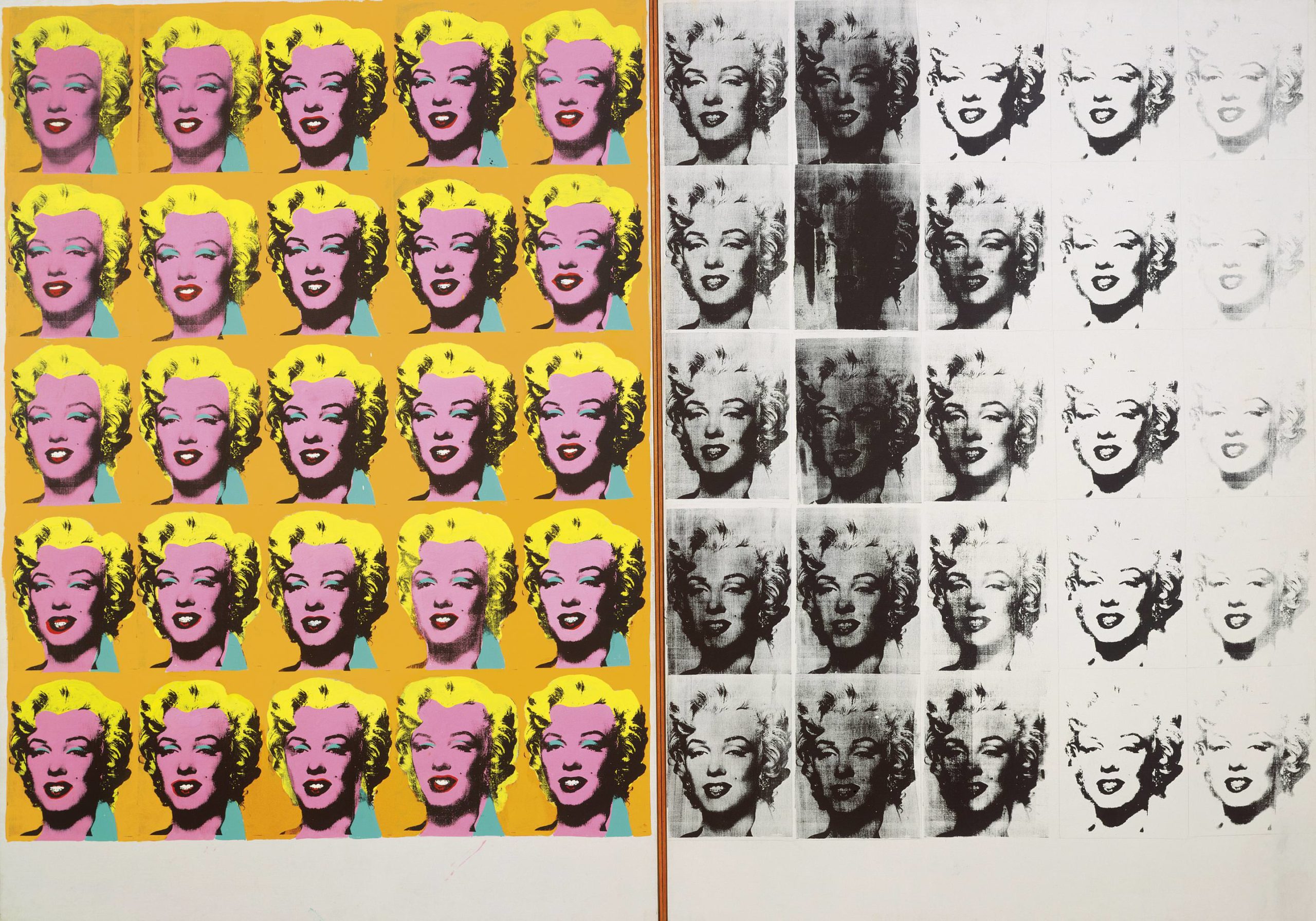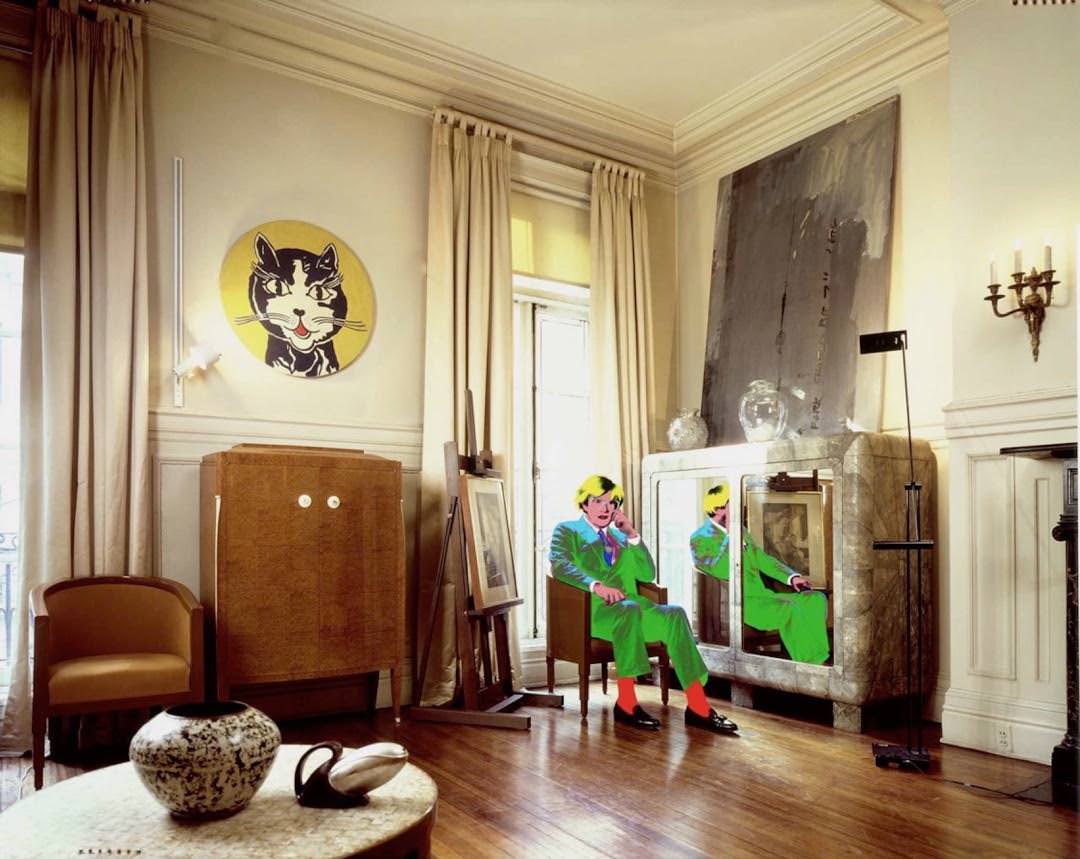Elaine Sturtevant, or merely Sturtevant, as audiences know her, is the subject of a new 50-year survey at the Museum of Modern Art (MoMA) that opened last Sunday, November 9. The exhibition, “Double Trouble,” features over 50 works spanning the length and media of her practice, which included painting, drawing, photography, sculpture, film and video. This breadth was necessary to the work itself, which involved creating her own versions works by other more famous, and often male, artists like Marcel Duchamp, Jasper Johns, and Andy Warhol, a practice that would lead to her marginalization or absence in the histories of modernism and postmodernism–until now.
Toward the end of her career (she passed away earlier this year), she would cease her recreations in exchange for video and photographic work pulled from television, films, and advertising. This switch is curator Peter Eleey’s method of introducing her history, which he demonstrates with a long corridor occupied on the left side by one of the most recent pieces in the show, Finite Infinite, a massive, four-channel video installation of a dog running across the frame, disappearing at the end, and reemerging where it began, repeating the action indefinitely. This leads the viewer visually and physically to a Johns-based bull’s-eye entitled Johns Target with Four Faces (study), the original of which is on view in the Painting and Sculpture II galleries on the fourth floor of MoMA. This juxtaposition sets the tone for a practice that poses questions about the regurgitation and repetition of ideas in the history of art, and what a work means if it is a recreation of something done before.
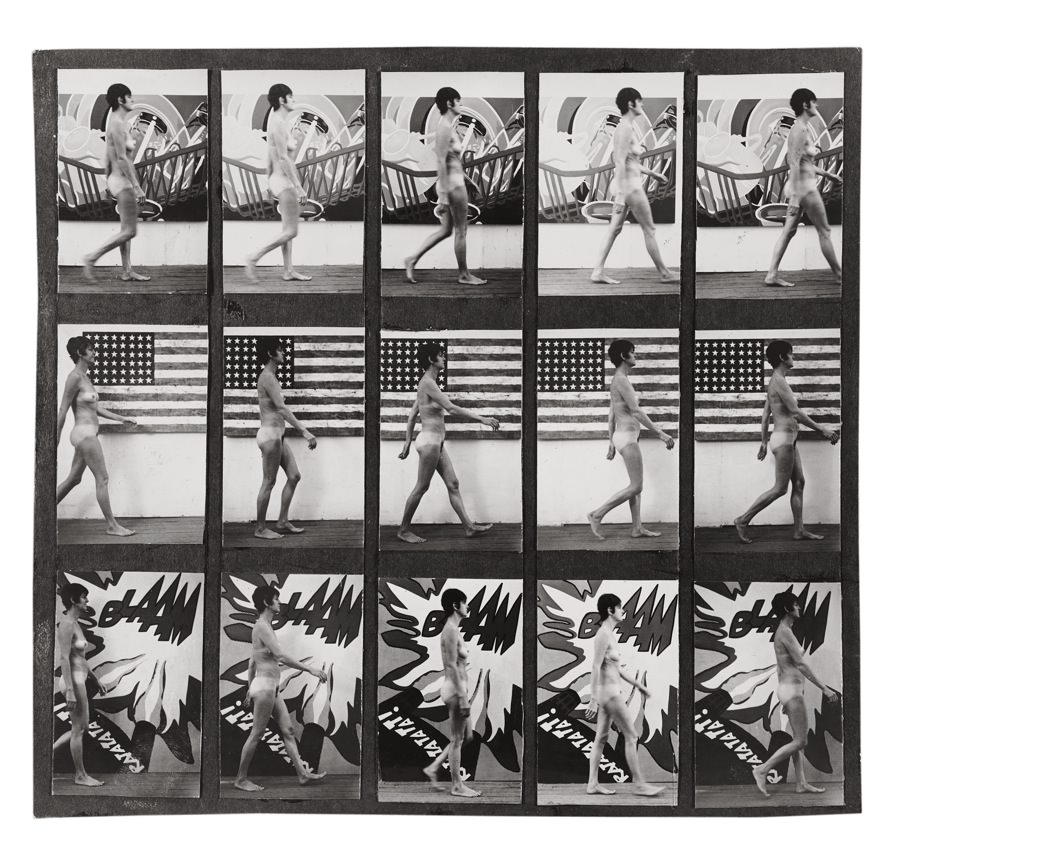
Sturtevant
Study for Muybridge Plate #97: Woman Walking
1966
Photograph
7 3/4 × 8 1/4 inches
Glenstone
Photo by Alex Jamison
© Estate Sturtevant, Paris
Sturtevant did not, however, shy away from leaving her mark on the works. Though some in the show seem like almost verbatim facsimiles, like Study for Lichtenstein’s Happy Tears or Gober Genital Wallpaper, (the original of the latter is on view in “Robert Gober: The Heart is Not a Metaphor” on the second floor of the museum) other recreations demonstrate coy changes that act as signifiers of her appropriations. These include Warhol Flowers, made with one of Warhol’s original stencils used upside down, which he allowed Sturtevant to take from his studio; Study for Muybridge Plate #97: Woman Walking, in which Sturtevant herself becomes the woman through a series of nude self-portraits in front of an American flag; and Johns 0 through 9, which Sturtevant politicizes by using a news clipping with a headline alluding to economic growth during Lyndon B. Johnson’s presidency.
All of these, excluding the Gober, date before 1973, at which point Sturtevant, fed up with what she considered shallow, moralizing miss-readings of her work, took a decade-long hiatus. She had been frustrated by critics that focused on the ethos of her recreation and referred to her works as “copies,” stating almost 30 years later in retrospect, “I realized that if I continued to work and get that kind of critique, then the work would get diluted, so I decided to wait until the mental retards caught up.”
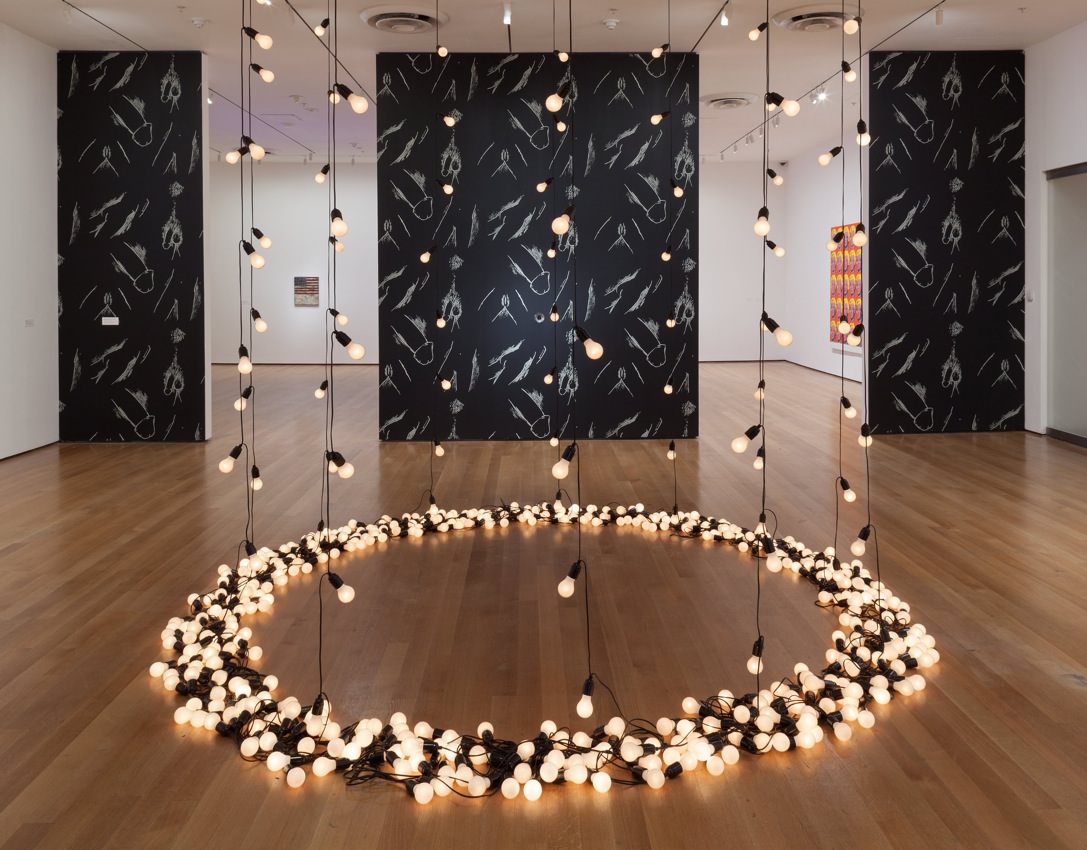
Installation view of “Sturtevant: Double Trouble,” The Museum of Modern Art, November 9, 2014–February 22, 2015. © 2014 The Museum of Modern Art. Photo: Thomas Griesel. All works by Sturtevant © Estate Sturtevant, Paris
Interestingly, the Pictures Generation emerged in her absence. Sherrie Levine mounted “After Walker Evans” at Metro Pictures in 1980, and the Image Appropriation movement came into full swing, seemingly derived from the very misinterpretations of her work that had driven Sturtevant to rest. She used this as a vehicle for redefinition, renewing her practice in 1985 with Haring Tag July 15 1981, based on Keith Haring’s work, but was immediately lumped in with this younger generation of artists.
Of course, this parallel is not naïve, for even if through misinterpretation, her works were a precursor to this movement. But it seems that, above all else, Sturtevant resisted categorizations and definitions. The closest we can get to understanding her work is through its antithesis, which she readily supplied. In all stages of her practice, she refused to be put into boxes. Though she was of the same generation as Warhol and Johns, her practice was not Pop, and though it would later coincide with the Pictures Generation, she adamantly rejected relations to it. And perhaps, in the end, that is the point, for a recreation of a Warhol, or a Duchamp, or a Johns undeniably deals with the fact that it is not any of these. Perhaps Sturtevant’s consistent definition of her work through its opposite is the quiet recognition of the veiled identity embedded in a practice based on what and who she was not.
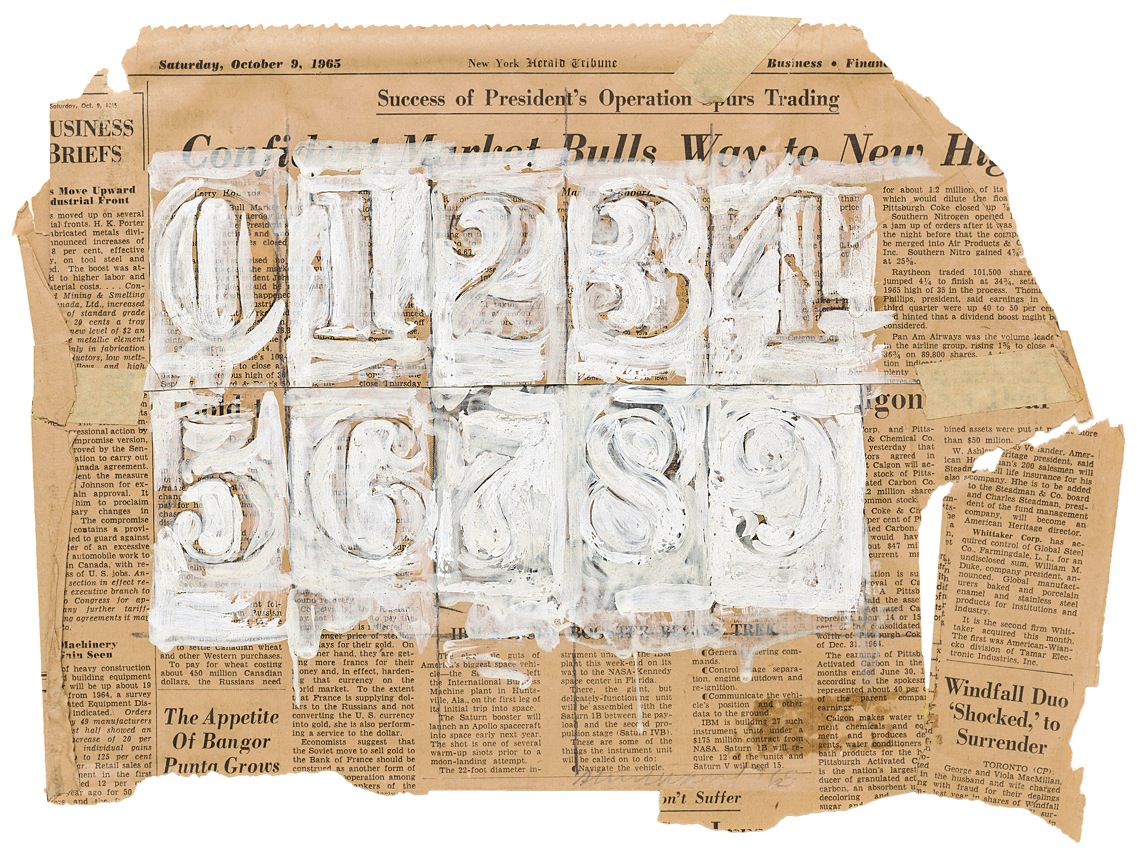
Sturtevant
Johns 0 through 9
1965
Encaustic on newsprint
10 13/16 × 14 3/8 inches
Collection de Bruin Heijn
Photo by Peter Cox
© Estate Sturtevant, Paris
“Double Trouble” is on view at MoMA through February 22, 2015.
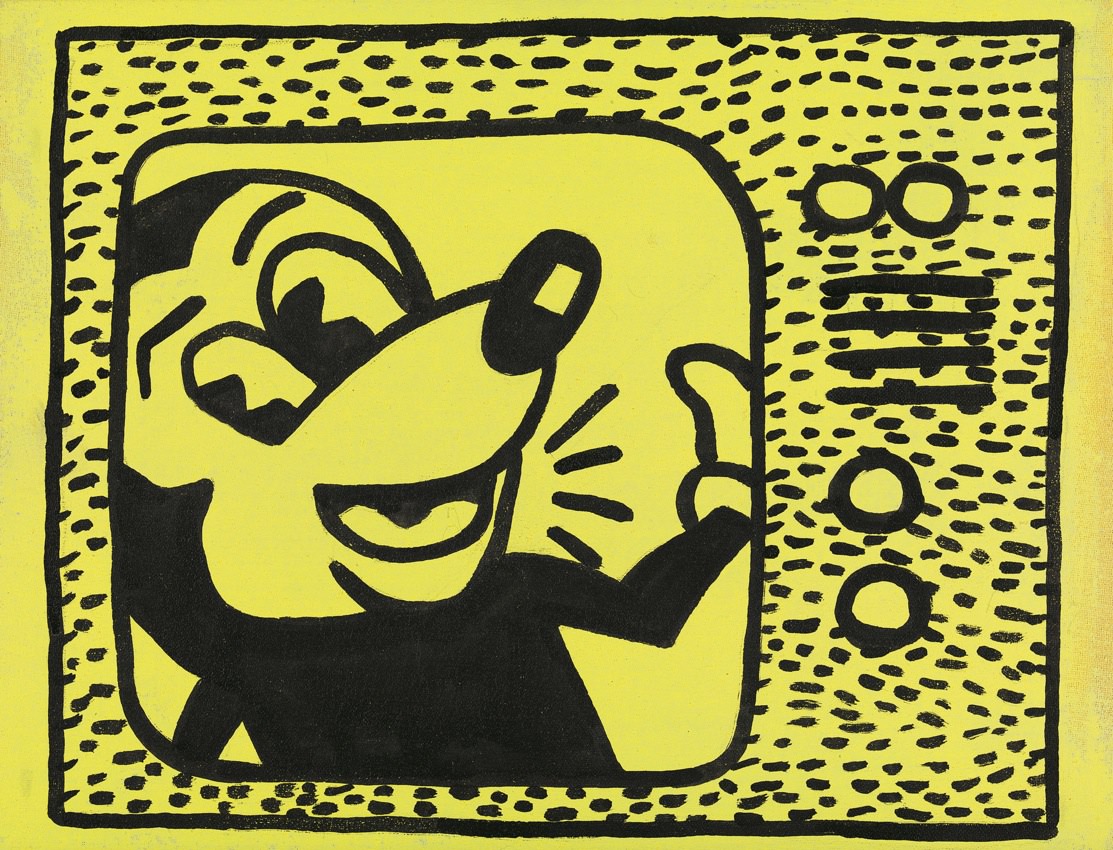
Sturtevant
Haring Tag July 15 1981
1985
Sumi ink and acrylic on cloth
9 13/16 × 12 13/16 inches
Estate Sturtevant, Paris
Courtesy Galerie Thaddaeus Ropac, Paris–Salzburg
Photo by Prallen Allsten
© Estate Sturtevant, Paris




